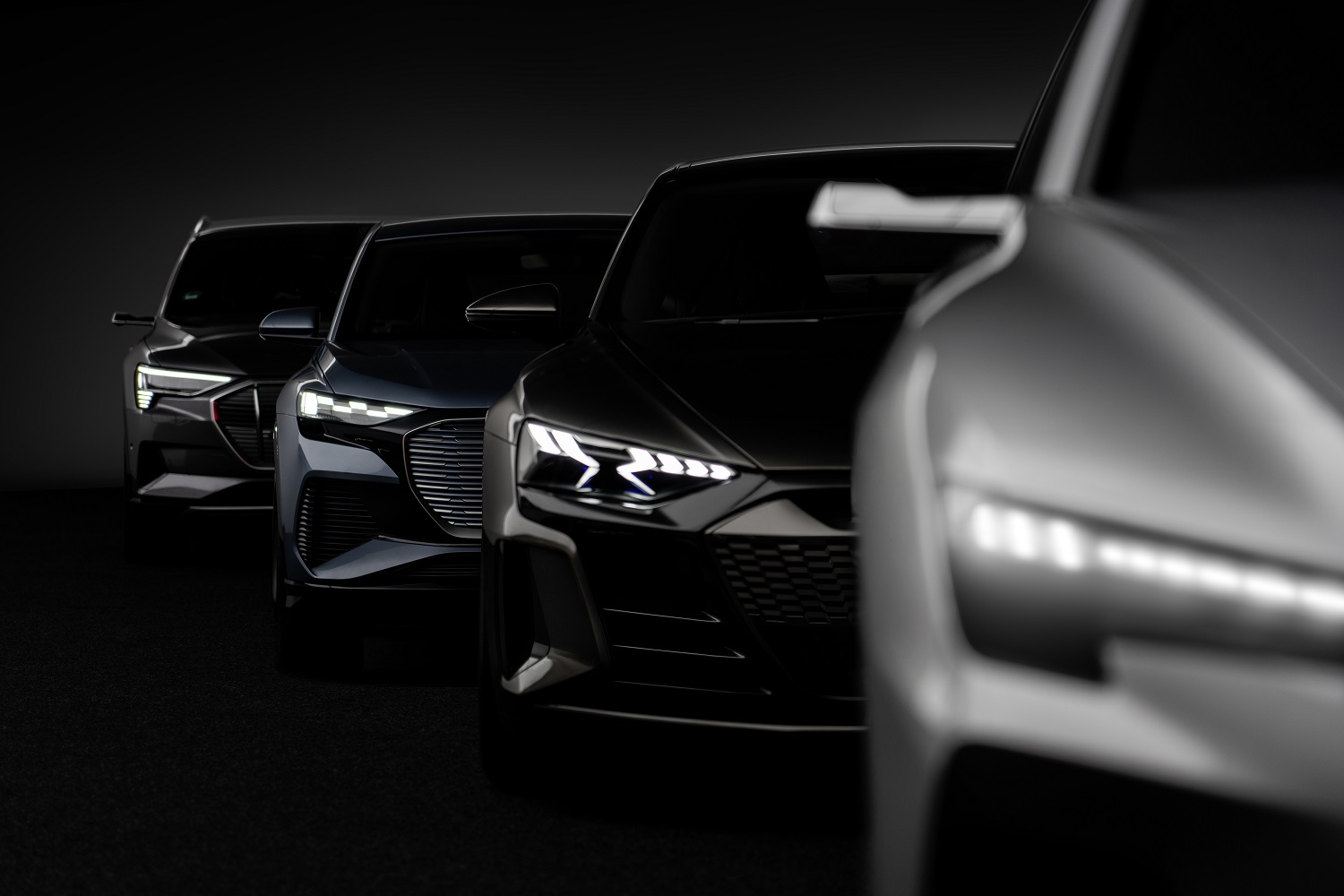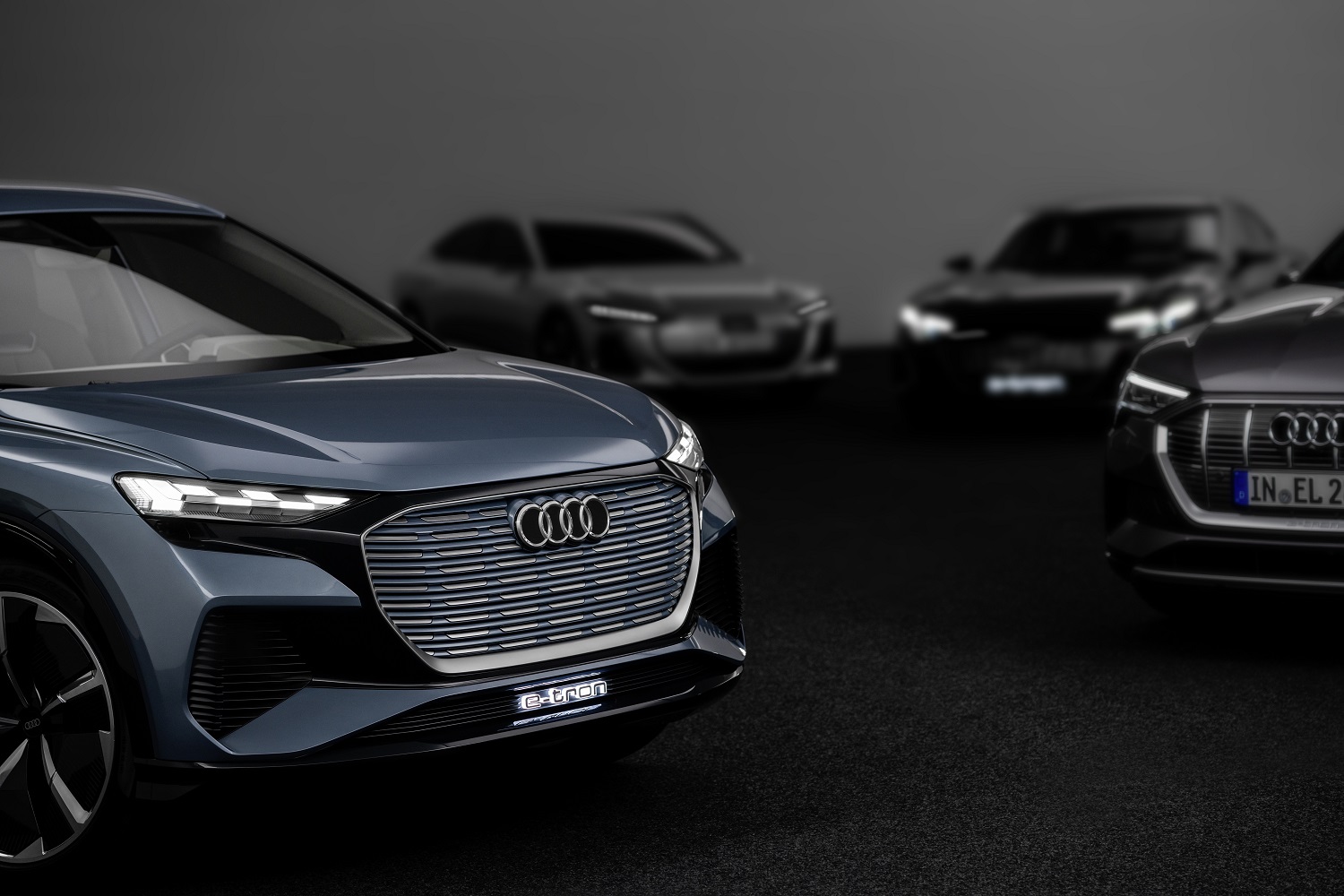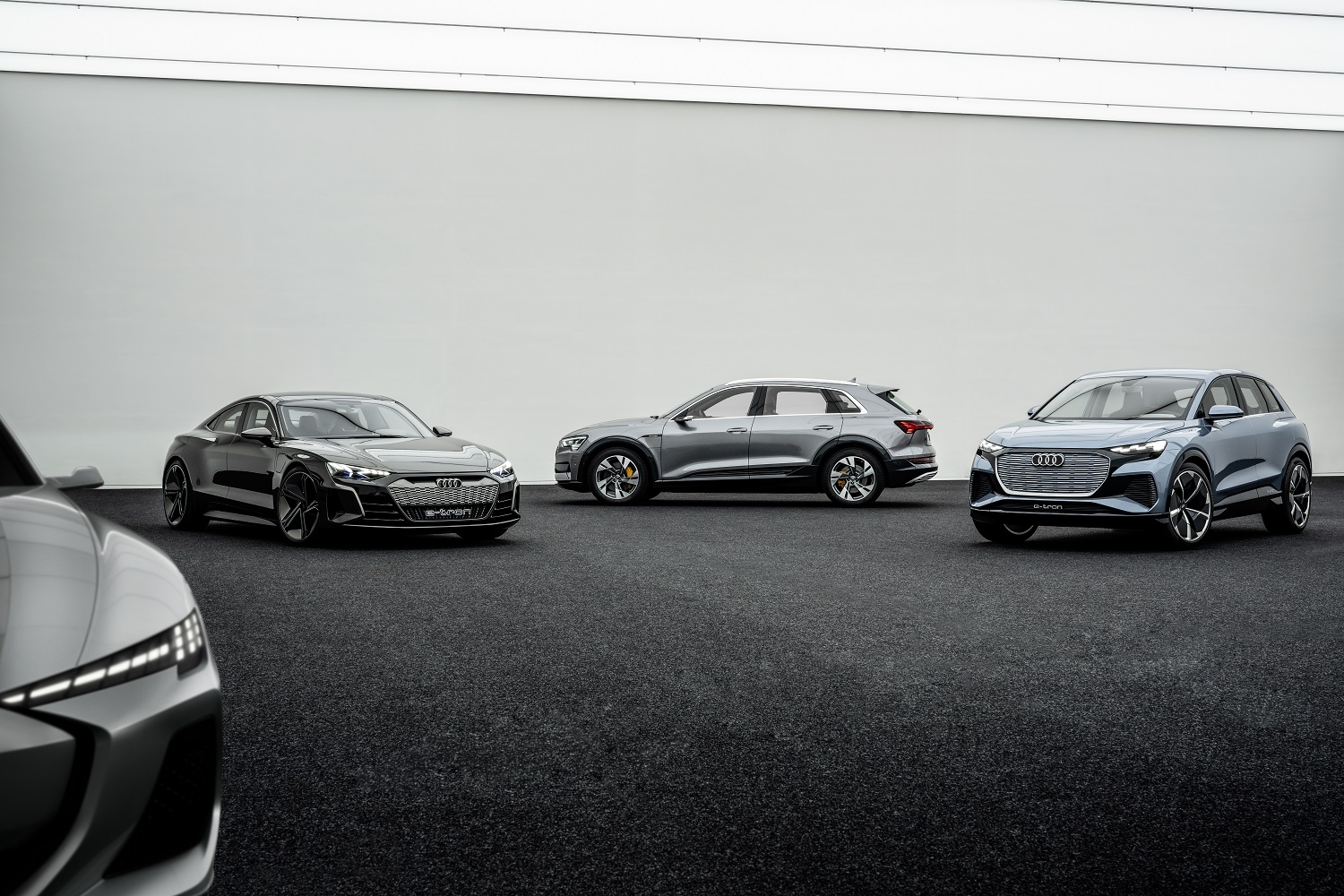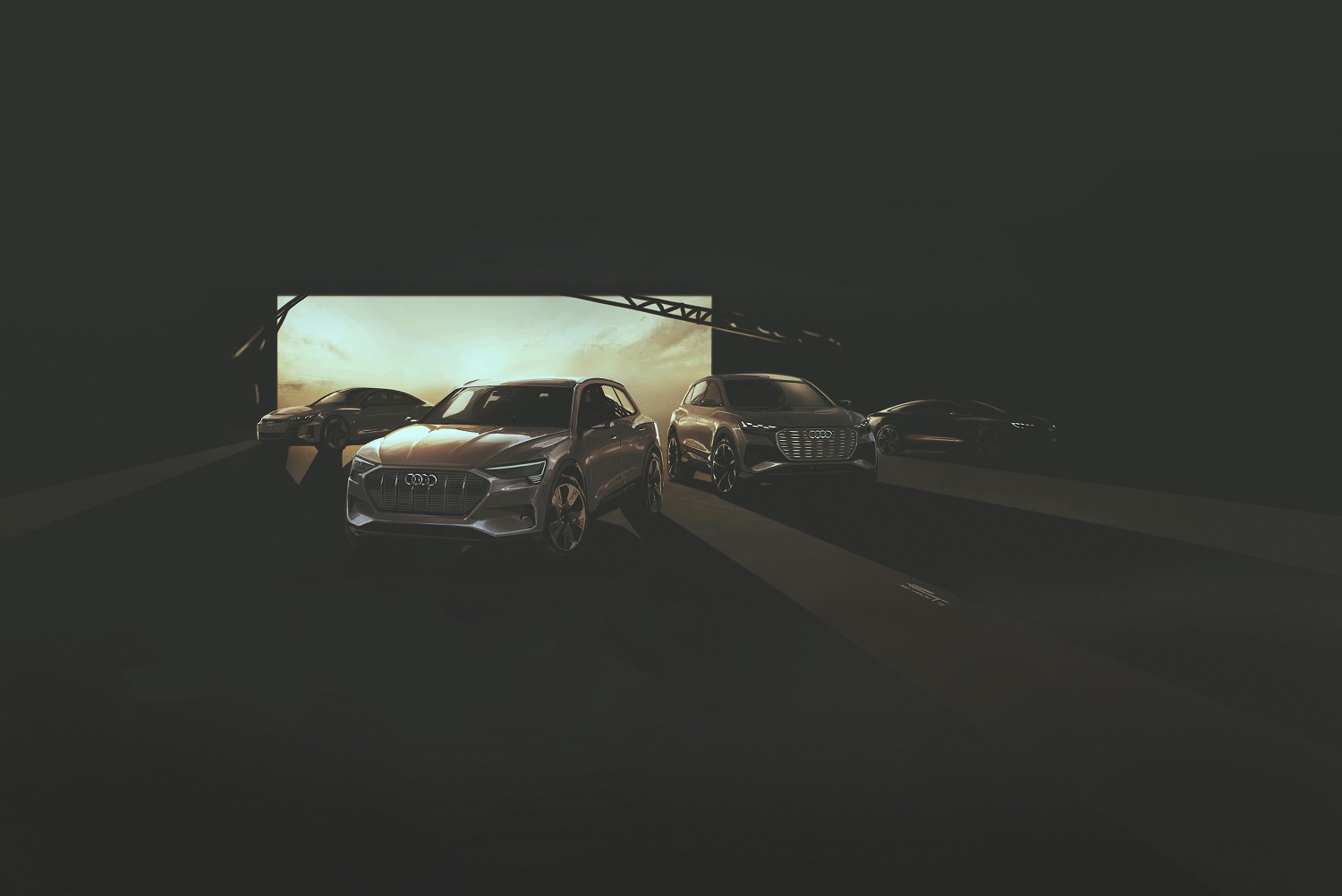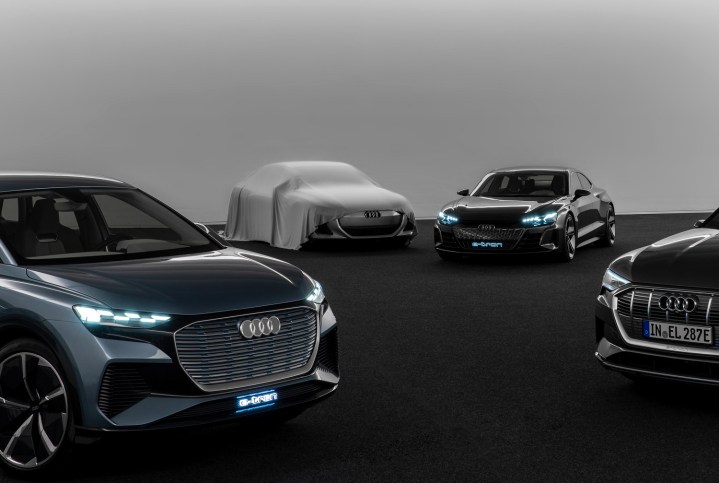
Sister companies Audi and Porsche are busily developing an electric car architecture named Premium Platform Electric (PPE) that will underpin a wide range of models scheduled to come out during the 2020s. The first PPE-based models are secretly coming to life in Audi’s research and development department as you read this, so Digital Trends went behind the scenes to learn more about how this amalgam of metal and wires will shape the firm’s range during the next decade.
Audi showed us a design mock-up that shines a light on what the first car it builds on PPE could look like. While photography was strictly forbidden, nothing prevents us from describing what we saw. The model (shown above, under a sheet) takes the form of an A5-sized four-door sedan with a swoopy, fastback-like roof line that reminds us of the gorgeous A7. It takes Audi’s design language in a sharper direction with angular headlights, and an electric car-specific insert in lieu of the company’s hexagonal grille. Out back, the rear lights are connected by a light bar that proudly wears Audi’s four-ring emblem.
“We want to put an EV spin on Audi’s design language.”
The yet-unnamed design study is a statement of intent, not an accurate preview of a showroom-bound car. We learned the Sportback-like model is one of two PPE-based proposals Audi’s designers are currently working on, though the second remains shrouded in secrecy. Even if the one we saw is selected by executives, Seebers told us it will change as it transitions into a production model. It will wear a softer, purer design that’s better suited to its electric powertrain.
“We want to put an EV spin on Audi’s design language,” he summed up.
What’s under the skin?
Audi and Porsche are co-developing the PPE platform from scratch, and it will only underpin upmarket electric cars, so engineers are able to make the architecture as flexible as possible. It’s being designed around a single, rear-mounted electric motor, but adding a through-the-road evolution of Quattro all-wheel drive will be as simple as dropping a second motor over the front axle. Every PPE-based car will feature an 800-volt charging system that promises lightning-quick charging times; the Porsche Taycan will inaugurate this technology when it reaches showrooms in 2020.
Thomas Kolthoff, PPE’s project manager, told Digital Trends that nearly every aspect of the platform is modular. Vehicle development teams will be able to change its wheelbase and modify its width as-needed, and they’ll be able to build a wide variety of cars on it including sedans, station wagons, SUVs, and performance models. Electric powertrains are relatively compact, so cars built on PPE will offer roughly the same amount of space as models in the next segment up. The A5-sized prototype we saw didn’t have an interior, but Seebers said it’s reasonable to expect it will have as much space as an A7.
Performance is a key component of the Audi identity, and that doesn’t just mean going really fast in a straight line. Motorists shouldn’t have to compromise handling to go electric, so PPE-based cars will be able to receive technology like four-wheel steering and torque vectoring. Product planners will decide whether to add these features on a case-by-case basis.
What’s next?
The first PPE-based Audi will make its public debut during the early 2020s. The German firm has proven a history of previewing upcoming models with thinly-veiled concepts, so we might see it as a prototype in the not-too-distant future.
In the meantime, Audi’s research and development department is putting the final touches on the production version of the stunning E-Tron GT concept unveiled in 2018. It’s built on the same J1 platform as the aforementioned Taycan, though the two sedans will look and drive completely different, and it’s scheduled to enter production in 2020 in the factory that also builds the mid-engined, V10-powered R8. At the other end of the spectrum, the Q4 E-Tron concept we discovered at the 2019 Geneva Auto Show will slot at the bottom of the company’s electric car range in less than a year. It will share its MEB platform — which is also highly flexible — with the recently unveiled Volkswagen ID.3.
